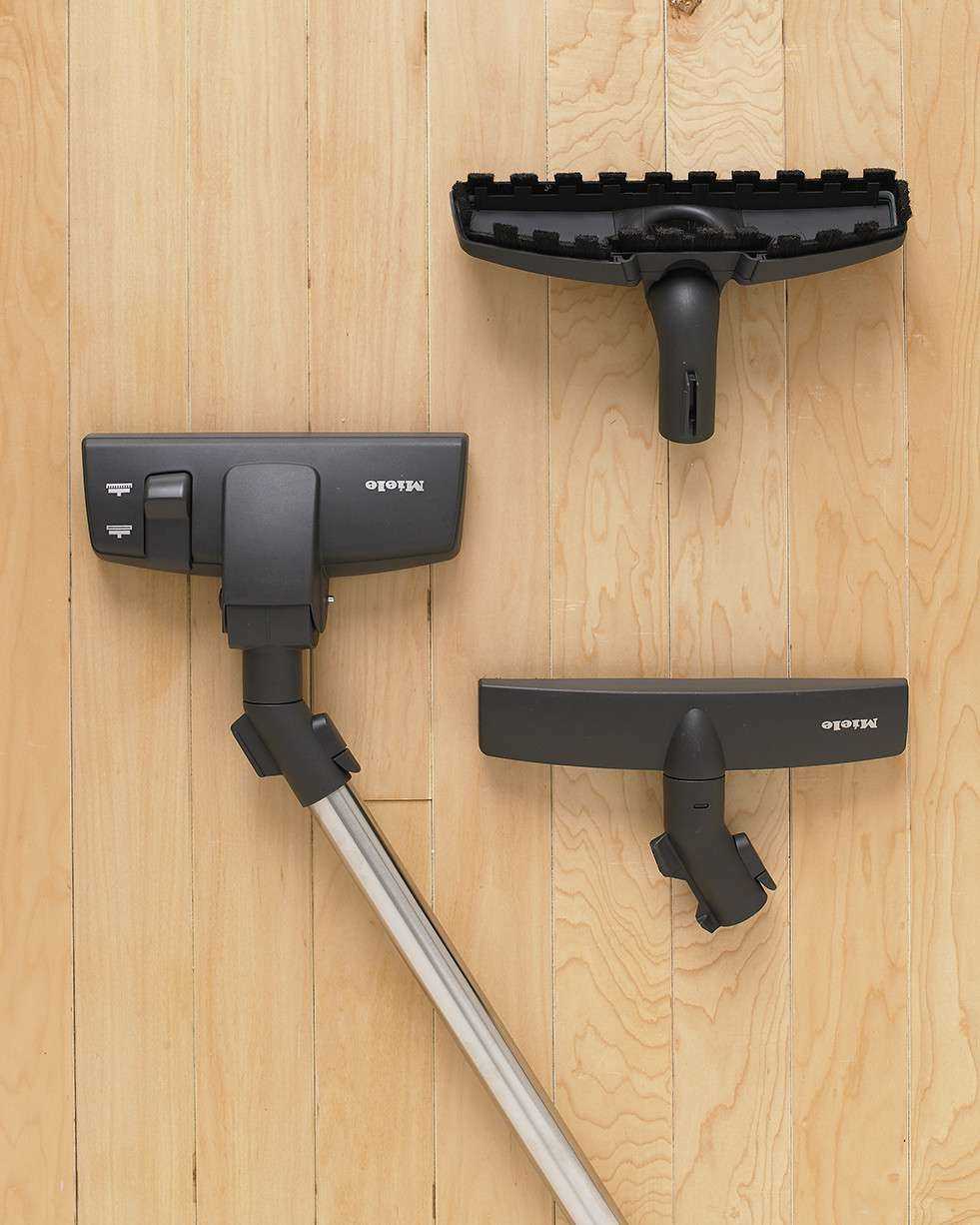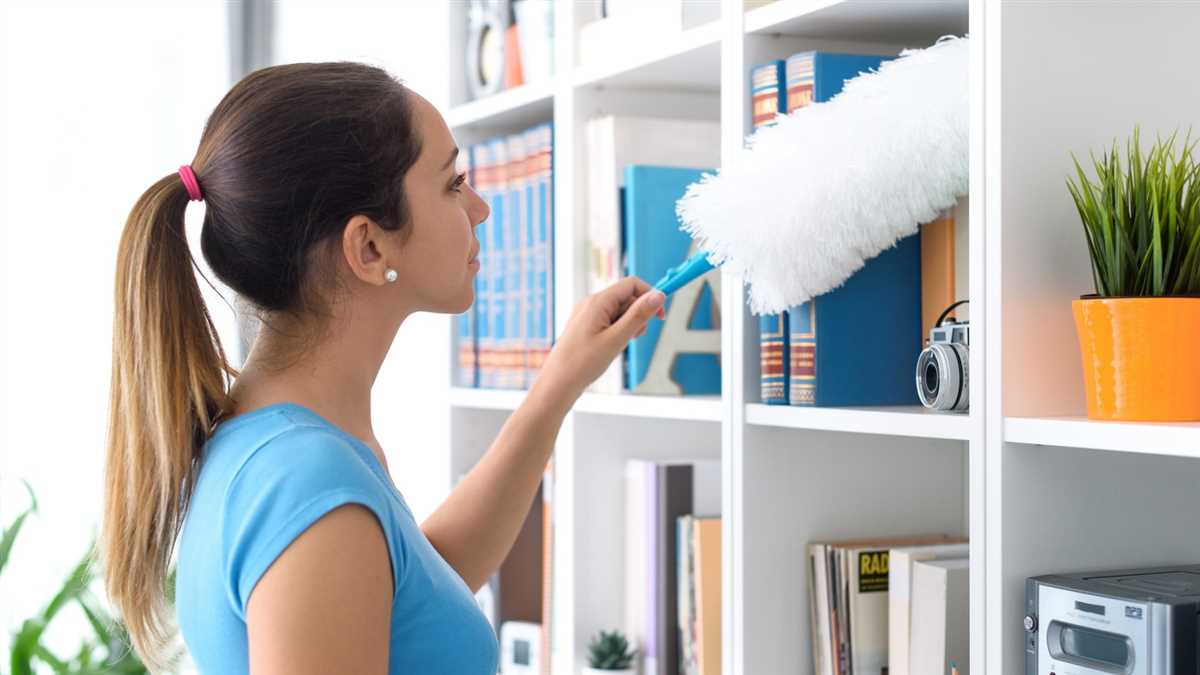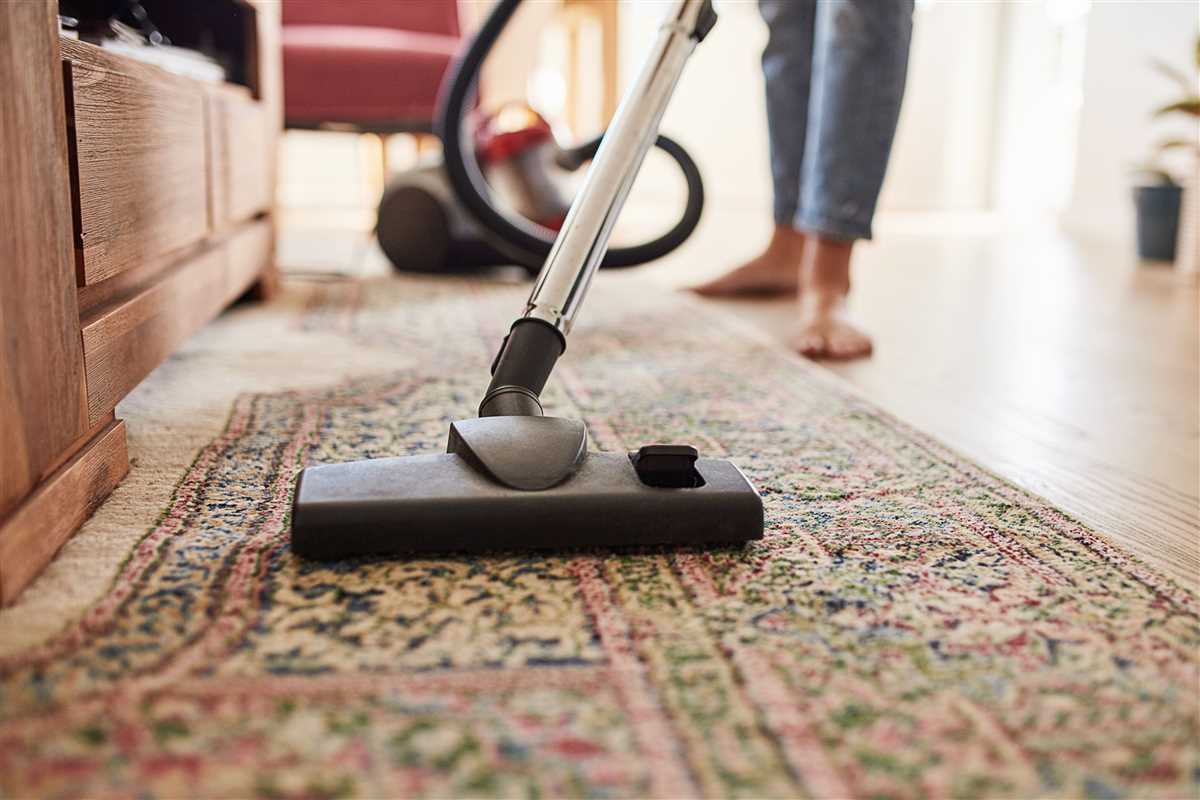




Dusting and vacuuming are two essential tasks for maintaining a clean and healthy home. However, the question of when to dust – before or after vacuuming – is a common dilemma for many. The answer to this question may depend on various factors, including personal preference, the type of surfaces in your home, and the level of dust accumulation.
Some experts suggest dusting before vacuuming to prevent particles from settling back onto freshly cleaned surfaces. By removing dust and debris first, you can ensure that your vacuuming efforts are more effective. Dusting also allows you to target hard-to-reach areas, such as corners and crevices, which may be more challenging to clean with a vacuum cleaner.
On the other hand, there are those who argue that dusting after vacuuming is the way to go. They believe that the vacuum cleaner can stir up dust particles and allergens, making it easier to capture them during the dusting process. Vacuuming first also helps to remove larger debris and dirt, reducing the likelihood of these particles spreading and settling on surfaces.
In conclusion, whether you choose to dust before or after vacuuming ultimately depends on your personal preference and the specific needs of your home. It may be beneficial to experiment with both methods and see which one yields better results for you. Ultimately, the most important thing is to establish a regular cleaning routine that includes both dusting and vacuuming to maintain a clean and healthy living environment.
When is the Best Time to Dust: Prior to or Following Vacuuming?
-
The Case for Dusting Before Vacuuming
Many people prefer to dust before vacuuming as it allows them to remove dust and dirt from surfaces, making it easier to clean the floors. Dusting before vacuuming also prevents dust from settling on freshly cleaned floors, resulting in a cleaner overall environment.
Hot PickEureka NEU800 Vacuum Cleaner with Lift-AwayInnovative Lift-Away technology for easy cleaningThe Eureka NEU800 combines powerful suction with a movable canister, enhancing your cleaning experience. It's perfect for pet owners, effectively removing hair and allergens with advanced filter technology.By dusting first, you eliminate the risk of dirt and dust particles being blown around by the vacuum cleaner, which can land on surfaces you have already cleaned. This approach ensures that you are tackling the mess in a systematic and efficient manner.
-
The Argument for Dusting After Vacuuming
On the other hand, some people prefer to dust after vacuuming, claiming that the vacuum cleaner will remove any loose dirt or dust particles that may fall from surfaces during the dusting process. By vacuuming first, you can easily collect any debris that has been dislodged and prevent it from settling back on the surfaces.
Dusting after vacuuming also allows you to have a clear visual of the areas that need attention. Any remaining dust or dirt that is not captured by the vacuum cleaner can be easily identified and addressed during the dusting process.
-
The Verdict: It Depends on Personal Preference
Ultimately, whether you choose to dust before or after vacuuming depends on your personal preference and cleaning routine. Both approaches have their merits and can result in a clean and dust-free home.
However, if you suffer from allergies or have respiratory issues, dusting before vacuuming may be a better option. This way, you can minimize the amount of dust and allergens in the air during the cleaning process.
Top RatedShark Corded Vacuum with Anti Hair WrapCuts hair from brush roll while cleaningThis Shark Vacuum features an Anti Hair Wrap design and convenient Lift-Away portability, making it ideal for stairs and upholstery. It also captures allergens, ensuring clean air for your family.
Benefits of Dusting Before Vacuuming
Dusting before vacuuming is an essential step in maintaining a clean and healthy home environment. By removing dust with a cloth or duster before running the vacuum cleaner, you can enjoy several benefits:
- More effective cleaning: Dusting before vacuuming allows the vacuum cleaner to capture and remove more dust, dirt, and allergens from the surfaces. By removing the loose dust first, the cleaner can focus on picking up the finer particles that are often embedded in carpets or upholstery.
- Improved indoor air quality: Dusting before vacuuming can help improve indoor air quality by reducing the amount of dust and allergens in the air. When you dust, you prevent the dust particles from becoming airborne and circulating throughout your home.
- Prevention of surface scratches: Dust particles can act like abrasive materials that can scratch and damage delicate surfaces. By dusting before vacuuming, you remove these abrasive particles, reducing the risk of surface scratches on items like furniture, countertops, and floors.
- Time efficiency: Dusting before vacuuming can save you time in the long run. By removing the dust beforehand, you prevent the vacuum cleaner from clogging or getting overloaded with larger debris. This can help ensure a more efficient vacuuming process and save you time by avoiding the need to constantly clean or unclog the vacuum.
In conclusion, taking the time to dust before vacuuming can greatly enhance the effectiveness of your cleaning routine. It helps improve indoor air quality, prevent surface damage, and make the vacuuming process more efficient. By incorporating this simple step into your cleaning routine, you can enjoy a cleaner and healthier home environment.
Advantages of Dusting After Vacuuming
Dusting after vacuuming may seem counterintuitive, but it actually offers several advantages. Here are some reasons why you may want to consider dusting after you vacuum:
1. Maximizing Efficiency

- Dusting after vacuuming helps to ensure that any dislodged dust or debris is effectively cleaned up by the vacuum cleaner.
- If you dust before vacuuming, there is a chance that some of the dust particles may settle back down onto surfaces, requiring you to dust again.
- By vacuuming first, you can remove as much dust and dirt from the surfaces as possible, making it easier to quickly and efficiently dust afterwards.
2. Reducing Allergens
- When you dust before vacuuming, you may unintentionally kick up dust particles into the air, which can worsen allergies or respiratory conditions.
- Vacuuming before dusting helps to capture those airborne particles and prevents them from resettling.
- By vacuuming first, you can effectively trap dust, pollen, pet dander, and other allergens in the vacuum cleaner’s filtration system, reducing their presence in your home.
3. Saving Time
- Since vacuuming is often a more time-consuming task than dusting, doing it first allows you to focus more time and attention on thoroughly vacuuming your floors.
- Once you have vacuumed, you can then quickly dust the surfaces and complete your cleaning routine in a more efficient manner.
- This approach can save you time by minimizing the need to go back and forth between dusting and vacuuming.
4. Achieving a Cleaner Finish
- Vacuuming before dusting ensures that you are starting with clean surfaces, making it easier to achieve a spotless finish.
- If you dust before vacuuming, there is a higher chance of spreading dust onto freshly cleaned surfaces, leading to a less polished appearance.
- This order of cleaning allows you to capture and remove dust from all surfaces, leaving your home looking cleaner and more presentable.
In conclusion, while the traditional method of dusting before vacuuming may be more common, there are some advantages to dusting after vacuuming. By maximizing efficiency, reducing allergens, saving time, and achieving a cleaner finish, this cleaning order can offer improved results and make your cleaning routine more effective.
Considerations for People with Allergies
Allergies can make cleaning tasks even more challenging, as dust and other allergens can trigger symptoms such as sneezing, coughing, and itchy eyes. To minimize the impact of these allergens during your cleaning routine, consider the following:
1. Dust with a Damp Cloth
When dusting, using a damp cloth instead of a dry one can help trap the dust particles and prevent them from dispersing into the air. This can reduce the likelihood of inhaling the allergens and minimize allergic reactions. Make sure to rinse the cloth regularly to avoid spreading the dust.
2. Wear a Dust Mask
If you have severe allergies or are particularly sensitive to dust, consider wearing a dust mask while cleaning. This can help filter out the allergens and prevent them from entering your respiratory system. Look for masks specifically designed for allergies or for high filtration efficiency.
3. Vacuum with a HEPA Filter
Investing in a vacuum cleaner with a HEPA (High-Efficiency Particulate Air) filter can significantly reduce the amount of allergens in your home. HEPA filters can effectively capture tiny particles like dust mites, pollen, and pet dander, preventing them from being recirculated into the air.
4. Empty the Vacuum Cleaner Outside
When you finish vacuuming, empty the contents of the vacuum cleaner outside if possible. This helps prevent the dust and allergens from being reintroduced into your indoor environment. If emptying outside is not an option, empty the vacuum cleaner in a well-ventilated area, away from living spaces.
5. Clean Bedding and Upholstery Regularly

Bedding and upholstery are common sources of allergens, such as dust mites and pet dander. Be sure to wash your bedding in hot water regularly and vacuum upholstery using a brush attachment to remove any allergens that may have settled. Using hypoallergenic covers for mattresses, pillows, and duvets can also help reduce exposure to allergens.
6. Consider Professional Cleaning
If your allergies are severe or you find it challenging to manage allergens on your own, you may want to consider hiring professional cleaners. Professional cleaning services often have specialized equipment and techniques to effectively remove allergens, providing a cleaner and more allergy-friendly environment.
By following these considerations, people with allergies can make their cleaning routine more effective in reducing allergens and minimizing allergic reactions.
Expert Recommendations on Dusting and Vacuuming
The Importance of Regular Cleaning

Regular cleaning of your home is crucial to maintain a healthy and comfortable living environment. Dusting and vacuuming are two essential tasks that should be included in your cleaning routine. However, the order in which you perform these tasks can affect their effectiveness.
Dusting Before Vacuuming: The Preferred Method
Experts generally recommend dusting your home before vacuuming. Dusting first allows you to remove the dust, dirt, and debris that has settled on surfaces, making it easier to vacuum up any remaining particles. This method also prevents the dust from settling on freshly vacuumed areas.
Dust your home from top to bottom, starting with ceilings, light fixtures, and walls, and working your way down to furniture and finally, the floors. Use a microfiber cloth or a duster to trap and remove the dust effectively.
Effective Vacuuming Techniques
Once you have finished dusting, it’s time to vacuum. Make sure your vacuum cleaner is in good working condition and equipped with a clean filter and brush attachment. Use the appropriate settings for your specific flooring type, whether you have carpets, hardwood, or tile.
Start at the farthest corner of the room and work your way towards the exit, using slow and deliberate movements. Make overlapping passes to ensure thorough cleaning, especially in high-traffic areas. Pay extra attention to corners, edges, and hard-to-reach areas where dust and debris tend to accumulate.
Finding the Right Cleaning Schedule
The frequency of dusting and vacuuming depends on various factors, such as the number of occupants in your home, the presence of pets, and the level of foot traffic. As a general guideline, aim to dust and vacuum at least once a week to maintain a clean and healthy living environment.
If you have allergies or respiratory conditions, you may need to clean more frequently. Consider incorporating additional cleaning tasks, such as washing bedding and vacuuming upholstery, to ensure optimal cleanliness.
Note: Expert recommendations may vary, so it’s essential to consider your specific circumstances and preferences when establishing your cleaning routine.
FAQ
Should I dust before or after vacuuming?
It is generally recommended to dust before vacuuming. When you dust first, you can remove the loose dust and dirt from surfaces, allowing for a more effective vacuuming. Dusting also helps to prevent the dust from becoming airborne and spreading around the room while you vacuum.
Why is it better to dust before vacuuming?
Dusting before vacuuming is better because it allows you to remove the loose dust and dirt from surfaces, which makes the vacuuming process more efficient. When you dust first, you prevent the dust from getting stirred up and spreading around the room while you vacuum.
Will dusting after vacuuming make a difference?
Dusting after vacuuming can still make a difference, but it may not be as effective as dusting before vacuuming. When you vacuum first, you remove the majority of the dirt and dust from the floor, but there may still be some lingering particles on surfaces. Dusting after vacuuming can help to remove these remaining particles for a more thorough cleaning.
Is there a specific order to follow when cleaning a room?
Yes, there is a recommended cleaning order for a room. First, start by dusting all surfaces to remove the loose dust and dirt. After that, vacuum the floors to remove any remaining dirt and debris. Finally, clean any other surfaces, such as countertops or furniture, using appropriate cleaning products. Following this order helps to ensure a more efficient and thorough cleaning.












